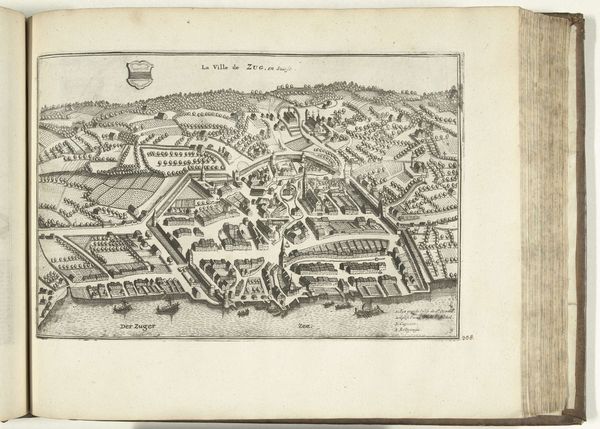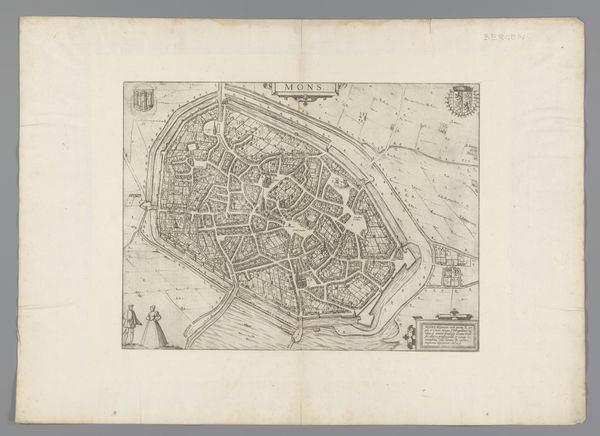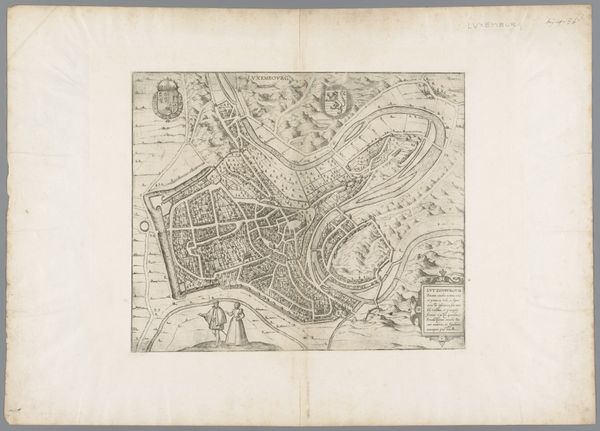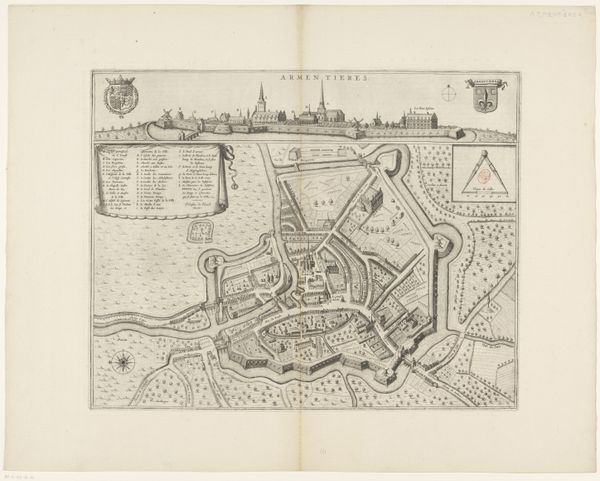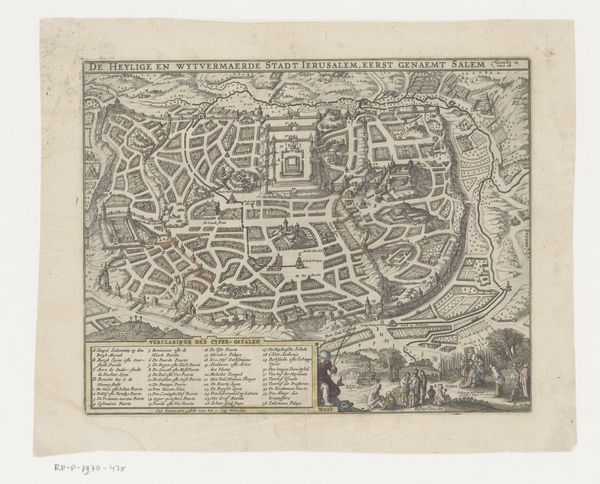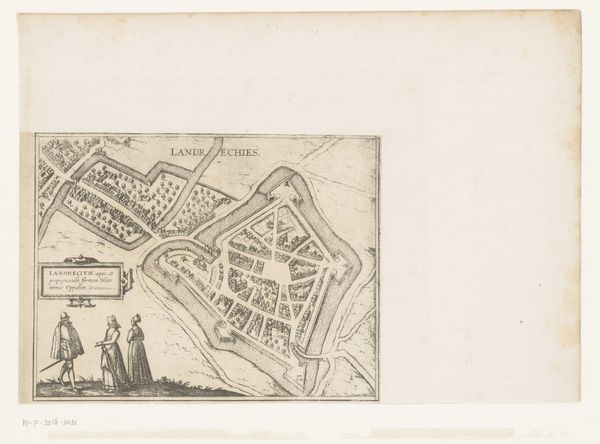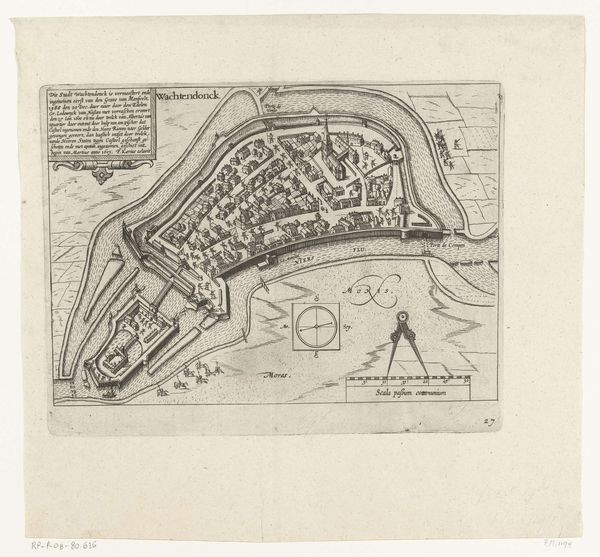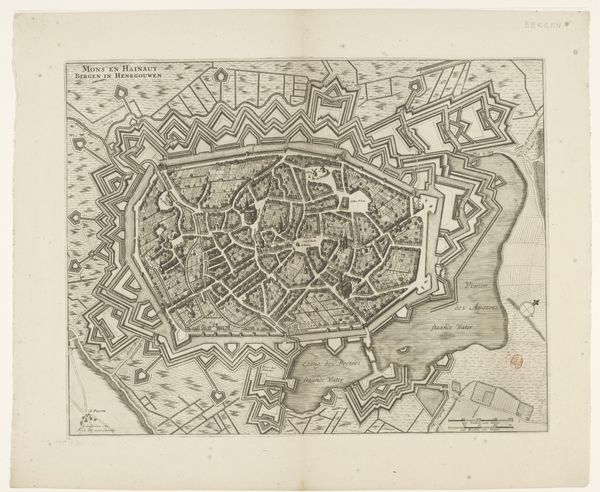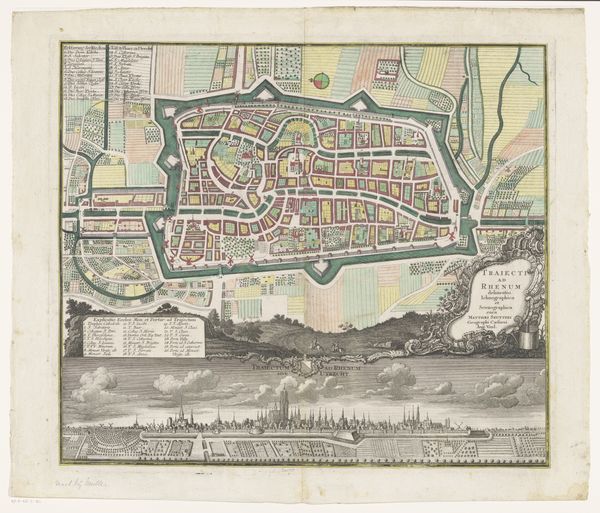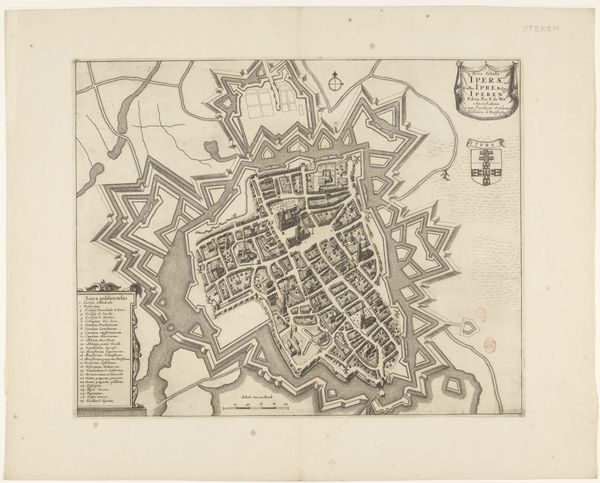
graphic-art, print, engraving
#
graphic-art
#
baroque
# print
#
old engraving style
#
landscape
#
geometric
#
line
#
cityscape
#
engraving
Dimensions: height 484 mm, width 417 mm
Copyright: Rijks Museum: Open Domain
Curator: Let’s take a look at “Plattegrond van Molkwerum,” an engraving from 1718 by an anonymous artist. The piece presents a detailed map of the village Molkwerum. I find it almost dreamlike—all those tiny lines and geometric forms create a very particular texture, an intimate, almost hidden view of the world. What does it conjure for you? Editor: Immediately, I'm drawn to how order is imposed on landscape and community through the print's sharp delineations. It echoes the Baroque era's passion for rational planning, using symbolism that links territory to governance. Curator: Exactly! Look at how the settlement nestles almost defenseless into its watery surround. It feels less like proud governance and more a story of fragility against a larger force, don't you think? Editor: That’s fair, the bodies of water aren't merely geographic features; they signify constant negotiation. I can trace the emblem of the swan. Back then, waterfowl symbolized grace, truth, beauty and above all navigation - relevant as a key virtue here. This cartography does more than define place. It establishes an iconography where the physical is perpetually vulnerable. Curator: Vulnerable indeed! The detailed architecture gives way to surrounding empty land—this constant dance between manicured domesticity and wild abandon—do you feel it too? It’s a little scary if you give it thought. Editor: I feel its age! The “old engraving style” as it is described certainly evokes this atmosphere that it represents more than just topography; it visualizes a community’s collective identity, intertwined with survival and navigation. In cartography as in culture, nothing exists neutrally; the symbolism elevates beyond functional documentation into communal identity. Curator: Absolutely, these prints—they tell a tale of humanity’s endless negotiations, struggles. I think looking closely—meditating—on that map can reveal something deeper about who we are and how we fit into the world today. Editor: Looking at maps in this way makes you understand the place but it makes you realize who used to live there, which is powerful because these details of identity transcend mere geographical interest. Curator: It certainly makes the study of old towns worth more than a quick look, doesn't it?
Comments
No comments
Be the first to comment and join the conversation on the ultimate creative platform.



